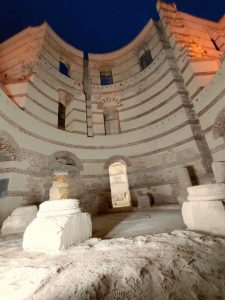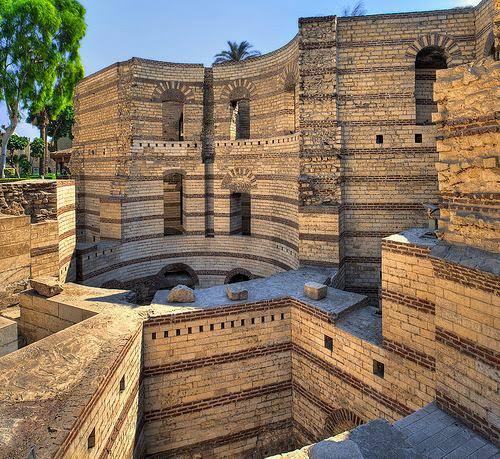Babylon Fort

Babylon Fort
it is an old fort that testifies to the extraordinary brilliance in the art of architecture and the ability to innovate. The fort was one of the strongest military fortifications and impregnable castles in those ancient times. The historian John Nikiosy, considered one of the most important Coptic historians and closest to the contemporary period of the Arab conquest of Egypt, mentions that Emperor Trajan built this fort when he learned of the leadership of the Jewish revolt in Alexandria. He sent an army to Egypt and founded a fortified fort and a castle from which water was brought from the Nile River. However, only four towers remain of that fortified fort, one below the Church of Mary Girgis, another below the Hanging Church, with two more towers, one of which is located in front of the Coptic Museum in Egypt.
 And the location of the fort was chosen with care for its military impregnability, as it controlled the desert road to the east and west. It is considered one of the few remaining remnants of the Roman Empire in Egypt, especially since they ruled Egypt for more than six centuries and were known for their passion for building large, magnificent structures. Also, Babylon Fortress was the strongest of fortresses in the entire region until the Arab conquest, as evidenced by the fact that the Islamic commander Amr ibn al-As did not conquer Egypt until after seizing that impregnable fort. And the Arabs took over Egypt immediately after the fall of the fortress, and the treaty for the surrender of the country was even concluded within this impregnable fortress.
And the location of the fort was chosen with care for its military impregnability, as it controlled the desert road to the east and west. It is considered one of the few remaining remnants of the Roman Empire in Egypt, especially since they ruled Egypt for more than six centuries and were known for their passion for building large, magnificent structures. Also, Babylon Fortress was the strongest of fortresses in the entire region until the Arab conquest, as evidenced by the fact that the Islamic commander Amr ibn al-As did not conquer Egypt until after seizing that impregnable fort. And the Arabs took over Egypt immediately after the fall of the fortress, and the treaty for the surrender of the country was even concluded within this impregnable fortress.
 And it is a curious coincidence that the word Babylon is of Assyrian origin and means ‘House of Peace’. In fact, it was the first place where the light of the Christian religion shone in Egypt, as it was the first city to receive the Islamic religion. The fort was well-known in the books of many historians as the Palace of Wax, due to its use during the ceremonies and festivals of the Egyptians. Many candles were placed on the walls and fortifications of the fort during these gatherings, making it appear like a palace of wax. Therefore, Babylon Fortress is one of the most important landmarks that bears witness to the cultural and civilizational diversity of Egypt.
And it is a curious coincidence that the word Babylon is of Assyrian origin and means ‘House of Peace’. In fact, it was the first place where the light of the Christian religion shone in Egypt, as it was the first city to receive the Islamic religion. The fort was well-known in the books of many historians as the Palace of Wax, due to its use during the ceremonies and festivals of the Egyptians. Many candles were placed on the walls and fortifications of the fort during these gatherings, making it appear like a palace of wax. Therefore, Babylon Fortress is one of the most important landmarks that bears witness to the cultural and civilizational diversity of Egypt.






